Root Rot Or Pests? Try These Effective Hebe Treatments For Any Growing Problems

Reviewed By COLIN SKELLY

Colin is a Horticulturist and Horticultural Consultant with experience in a range of practical and managerial roles across heritage, commercial and public horticulture. He holds the Royal Horticultural Society’s Master of Horticulture award and has a particular interest in horticultural ecology and naturalistic planting for habitat and climate resilience.
Contributions From CHARLIE BEWLEY

With over 35 years of experience growing hebes, Charlie Bewley is the Owner of Hic Bibi Wholesale Nurseries, based in Chorley, UK.
IN THIS GUIDE
HEBE GUIDES
Common Problems
Container Growing
Propagation
Pruning
Varieties
Prized for its colourful flowers and foliage, hebe is a resilient plant which adapts well to most climates and terrains and doesn’t demand too much in the way of upkeep.
However, like pretty much all plants, it’s not completely impervious to growing pains.
Some of the most common complications encountered by gardeners when growing hebe in their garden include:
- Root rot
- Underwatering
- Leaf spot disease
- Downy mildew
- Too much sunlight
- Pests
To identify which of the above issues is afflicting your plant and, most importantly, to learn how to address it appropriately, read on for more detailed advice below.
1) Root Rot
Root rot afflicts plants in soil with poor nutrients, bad drainage or excessively cold temperatures.
If the ground becomes waterlogged, the roots can drown, or else fungi can develop which causes them to rot.
A hebe plant suffering from root rot will be immediately apparent because all parts of the plant, including its stems and leaves, will turn brown and growth will decelerate almost entirely.
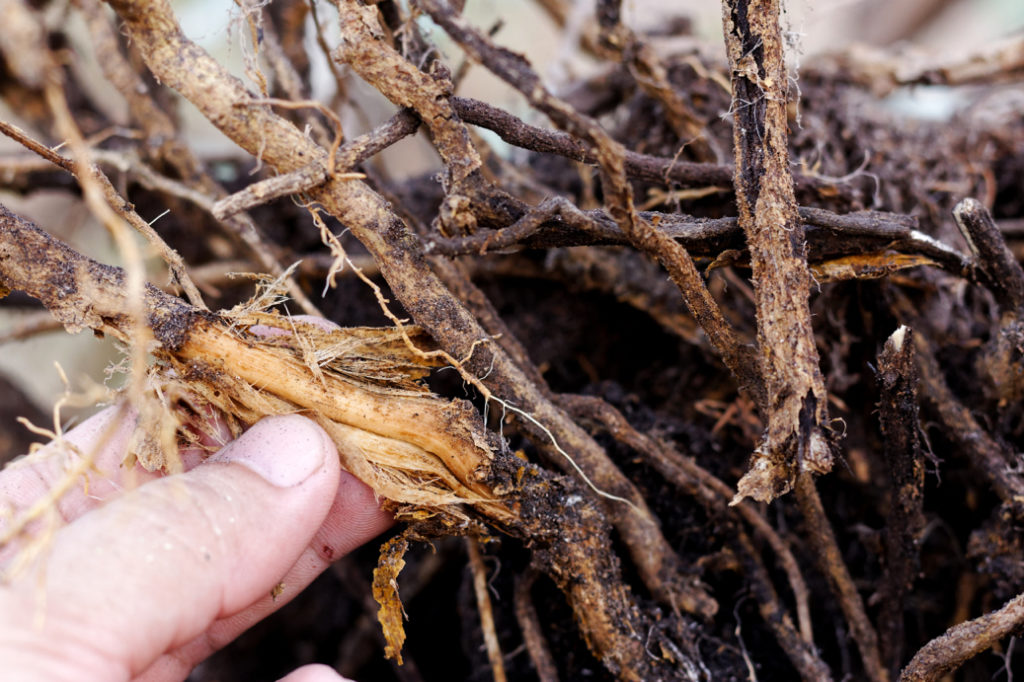
Digging up the plant will reveal that the roots themselves are completely rotted, turning black and limp in the process.
Unfortunately, root rot is pretty much a death sentence for your hebe specimens.
The only thing to do is dig up and dispose of the affected plants, then improve the soil quality by adding nutrients and enhancing drainage.
After that, it’s simply a case of planting a new hebe in the rejuvenated terrain.
2) Under Watering
While root rot can occur because of an excess of water, a shortage of water can have similarly disastrous results.
Under-watered plants will see their root balls dry out completely, meaning they are not able to extract the nutrients they need from the soil.
The symptoms of this are most noticeable in the plant’s leaves, which will begin to become brown and discoloured.
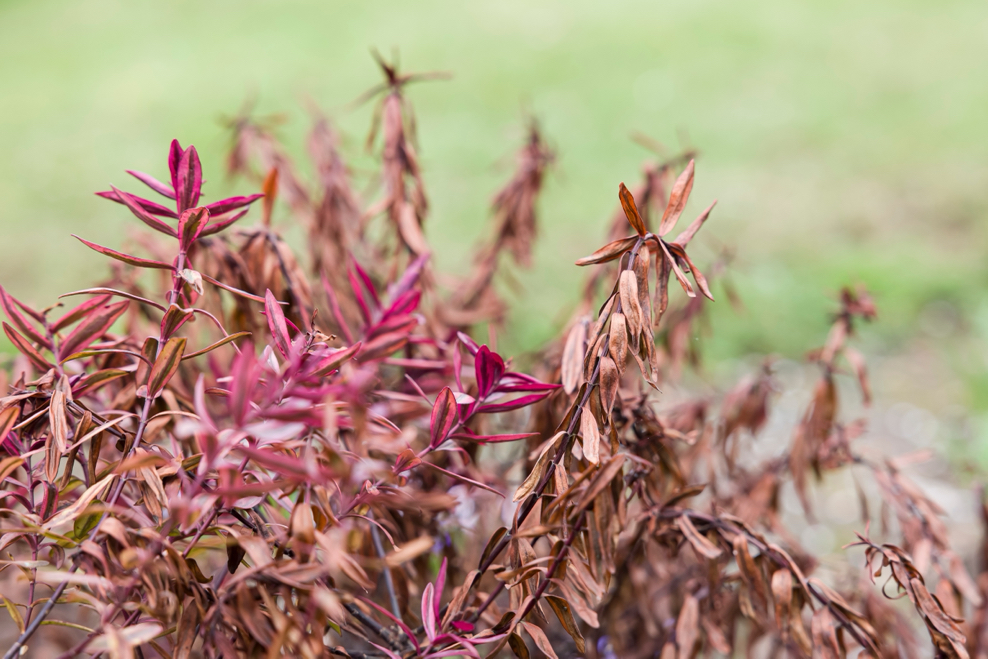
If this occurs with your hebe, check the soil around its base by gently inserting your fingers into it.
It should be damp but not saturated or bone-dry.
If the latter occurs, simply water the plant abundantly and apply a layer of organic mulch to retain the moisture within the soil.
If it doesn’t show signs of improvement within a couple of days, it could be that the root ball is repelling the water; remedy this by adding a teaspoon of liquid soap to 10L of water and irrigating the plant over an extended period.
3) Leaf Spot Disease
Officially known as Septoria, this disease is caused by a fungus growing on the plant and manifests itself in the shape of brown spots on its leaves.1Lee, J., Orosa, B., Millyard, L., Edwards, M., Kanyuka, K., Gatehouse, A., Rudd, J., Hammond-Kosack, K., Pain, N., & Sadanandom, A. (2015, March 24). Septoria leaf blotch disease in wheat. New Phytologist Foundation. Retrieved March 16, 2023, from https://www.newphytologist.org/news/view/81
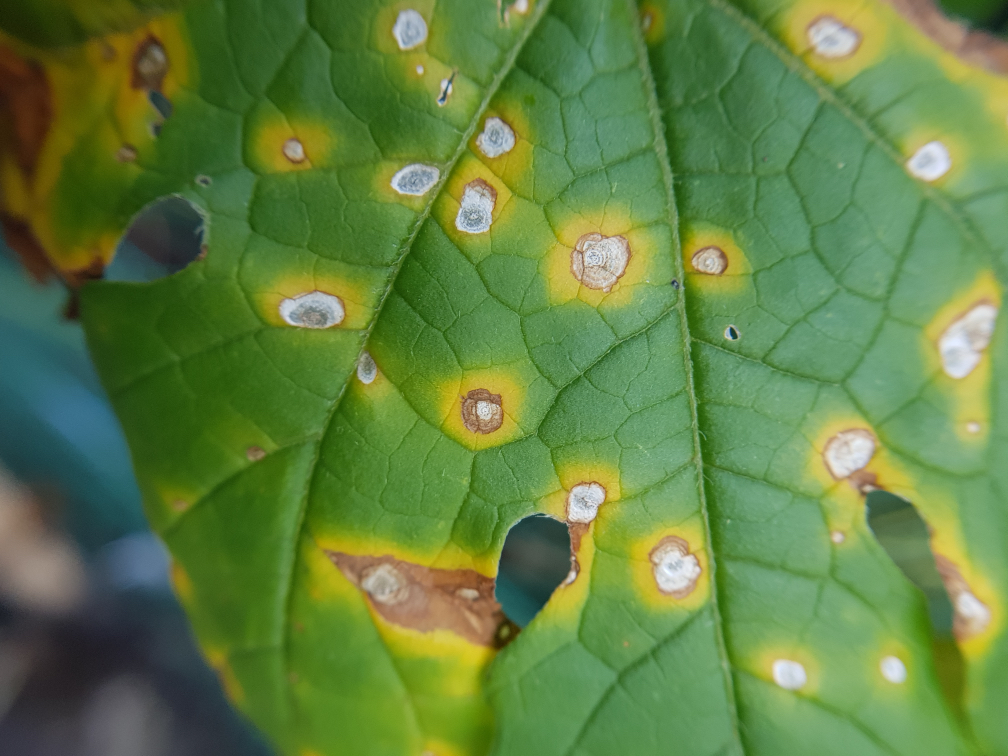
The signs are generally visible from October to February but can appear earlier in the year on occasion.
Try to avoid watering from above to reduce moisture on the leaves, optimise air circulation and remove affected leaves.
4) Downy Mildew
If you notice irregular brown patches on the top of your hebe’s leaves and a downy grey fungal growth on their underside, it could well be suffering from downy mildew.
Hebes can be prone to downy mildew and blackspot, more so if container grown – they seem to be happy when in the ground” says Charlie Bewley from Hic Bibi Hebe Nursery.
“If this occurs remove any dead leaves from around the plant don’t put the dead leaves in compost.
“There are effective treatments and more biological treatments are becoming available. [Make sure to] check the label.”

This malady is caused by the growth of the fungus Peronospora grisea, which thrives in damp, cold conditions with poor circulation of air.2Peronospora grisea. (n.d.). Peronospora Grisea (Hebe Downy Mildew). Retrieved March 16, 2023, from https://www.bioimages.org.uk/html/Peronospora_grisea.htm
If left unattended, the fungus and the mildew it causes can eventually kill your plant completely.
5) Too Much Sunlight
From too little sunlight to too much sunlight, hebe plants can also suffer if they receive too much of a good thing.
Overexposure to UV will become obvious if the foliage is brown, scorched, or crunchy to the touch.
“I have lost a few Hebes in pots from too much exposure to strong sunlight,” shares Master Horticulturist Colin Skelly.
“Think carefully when planting or placing a pot to ensure that shade is available during the middle of the day.”
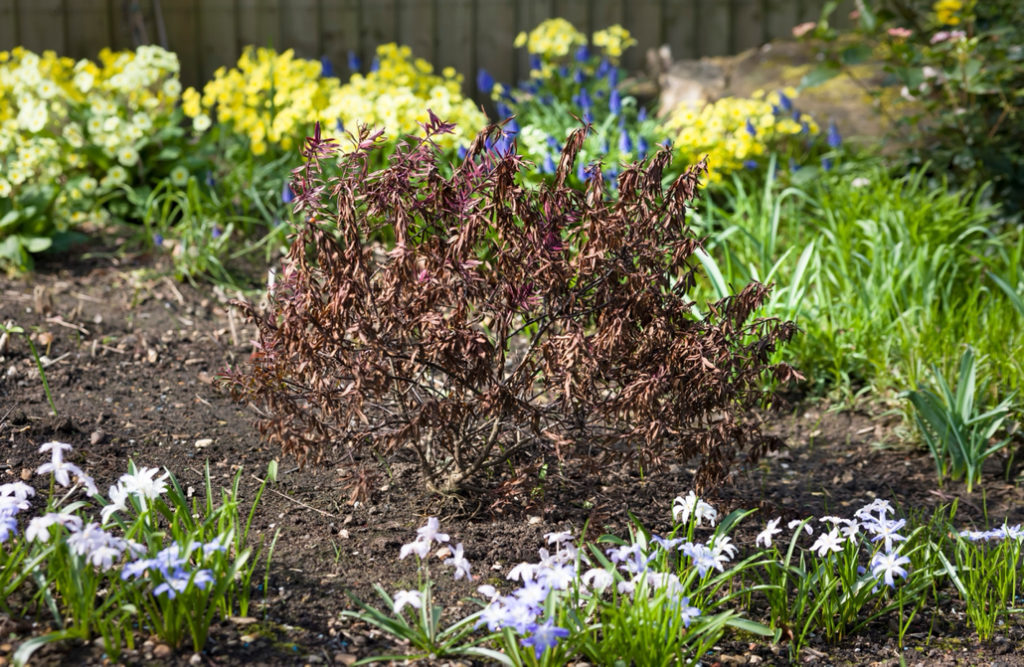
It’s even more easily identifiable if those symptoms only appear on one side of the plant.
This concern most commonly occurs during the summer months and can be prevented by protecting your plant from the brightest of the sun’s rays.
Move potted specimens indoors during peak hours (11am and 3pm) or erect a shade cloth for those growing in the ground outside.
6) Pests
Hebe plants are not just pleasing to humans; they’re also an appetising prospect to all sorts of bugs and beasties, including caterpillars, vine weevils and leafcutter bees.
You can identify which insect is attacking your plant by the signs they leave behind.
For example, caterpillars will deposit tiny excreta on the lower leaves of the plant.
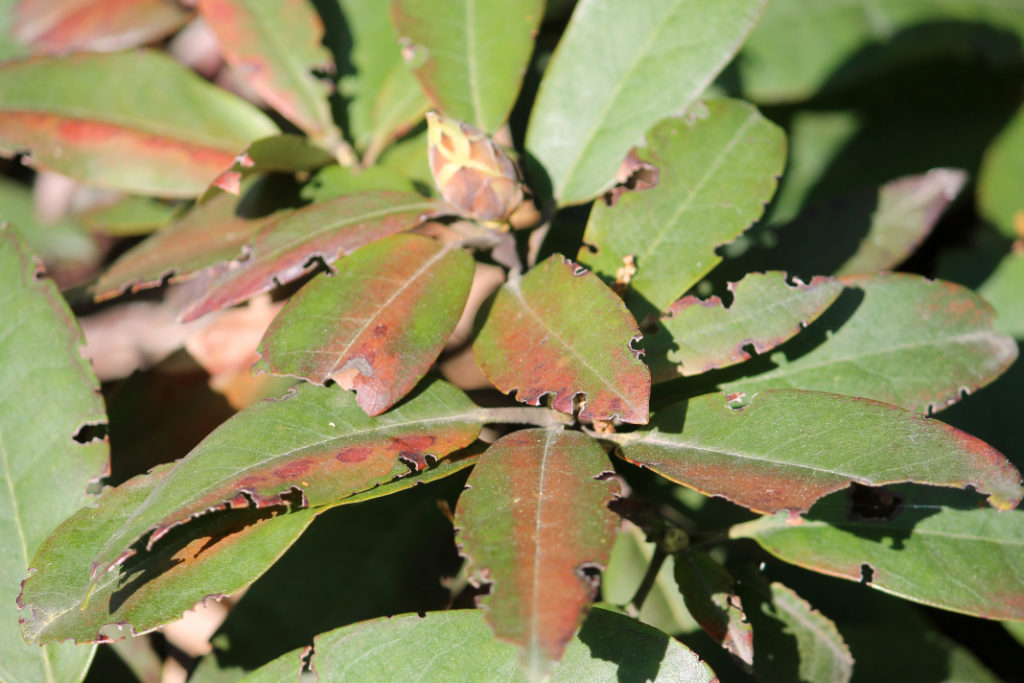
Vine weevils take small, notched chunks out of the foliage, while leafcutter bees will remove much larger and rounder holes from them.
Caterpillars are best dealt with by removing them manually, while vine weevils can be treated using diatomaceous earth or sticky traps.
As for leafcutter bees, they provide important pollination service for the rest of your garden and the wider environment, so I find it’s best to just let them have a slice of leaf every now and again!
References
- 1Lee, J., Orosa, B., Millyard, L., Edwards, M., Kanyuka, K., Gatehouse, A., Rudd, J., Hammond-Kosack, K., Pain, N., & Sadanandom, A. (2015, March 24). Septoria leaf blotch disease in wheat. New Phytologist Foundation. Retrieved March 16, 2023, from https://www.newphytologist.org/news/view/81
- 2Peronospora grisea. (n.d.). Peronospora Grisea (Hebe Downy Mildew). Retrieved March 16, 2023, from https://www.bioimages.org.uk/html/Peronospora_grisea.htm

